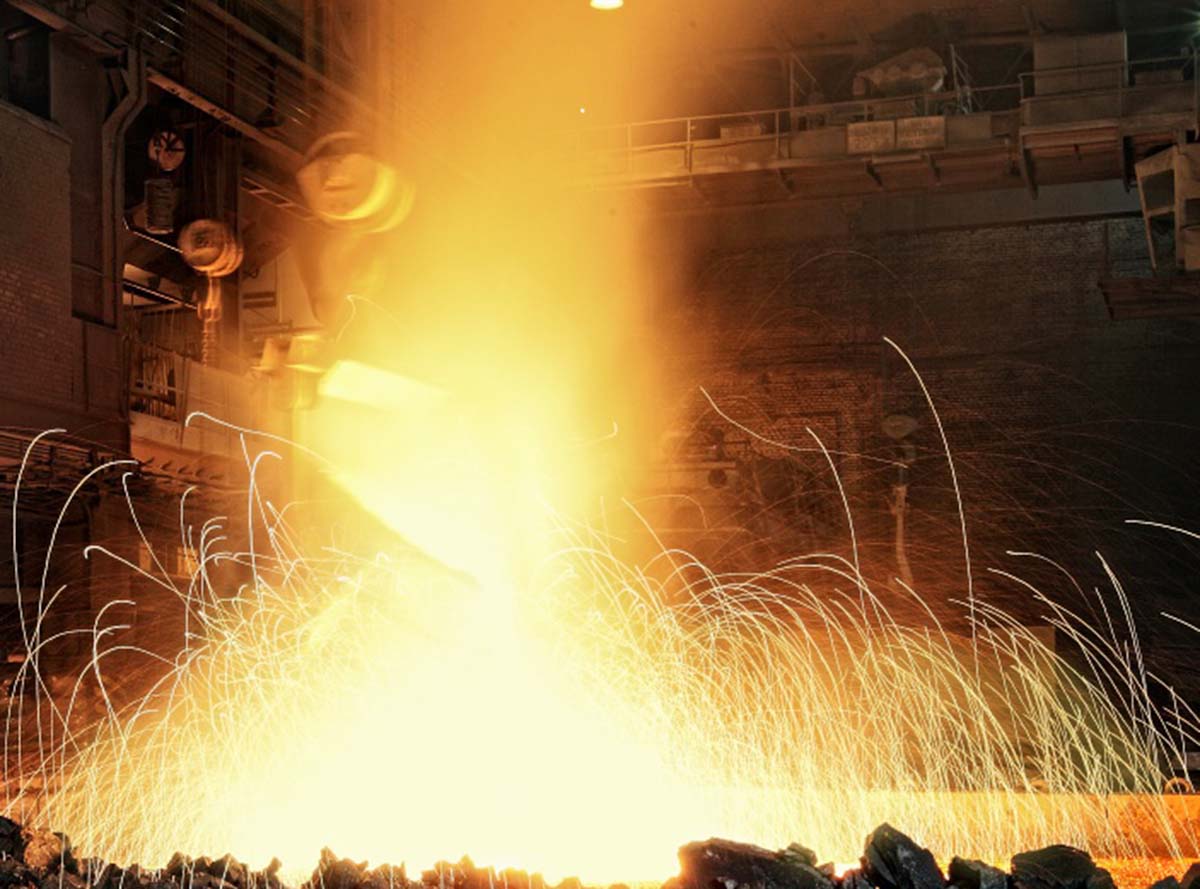
Project objective:
PLN 12,167,458.50
PLN 5,017,439.90
01.10.2021 – 30.04.2023
The project objective was achieved by performing R&D works focused on development of a physico-chemical model and technological process scheme,
and by carrying out industrial validation tests in accordance with them at the technological line consisting of two 12 MVA furnaces and a refining installation.
The project implementation was divided into 4 stages:
STAGE 1 INDUSTRIAL RESEARCH
The team of the AGH University of Science and Technology in Cracow (AGH) conducted a series of calculations and model simulations with the use of thermochemical bases and performed theoretical analyses in order to compare physico-chemical properties of the Crosimax alloy and the base alloy – LC FeSiCr – produced by Re Alloys with the use of measurement data from production of the alloy manufactured at that time.
AGH ]manufactured three batches of the Crosimax alloys on a laboratory scale by melting the product – LC FeSiCr – with other reagents e.g. calcium silicon,
silicon of technical grade and aluminium, in order to obtain samples of the Crosimax alloy of three different chemical compositions intended for laboratory tests of the scope specified in paragraphs 3 and 4 below.
For comparative purposes, AGH conducted a series of laboratory tests including analyses of chemical composition, morphological phase composition
and physical properties such as density, melting point or enthalpy of fusion of the obtained samples of the Crosimax alloys and the base alloy – FeSiCr – manufactured in the industrial conditions of Re Alloys.
What is more, AGH conducted laboratory-scale comparative melts of LC FeCr as a reducing agents with the use of FeSiCr and the new group of the Crosimax alloys in order to confirm their higher reducing power.
The completion of the task resulted in identification of three compositions of the Crosimax alloys for manufacturing tests on industrial scale on the existing
production line.
STAGE 2 DEVELOPMENT WORKS
Building a theoretical model of manufacturing process was performed by way of thermodynamic and physico-chemical calculations enabling energy and material balance, as well as characteristics, direction and speed of the process, that is the characteristics
of the balance in multi-phase and compound materials, also of the conditions of the process of simultaneous reduction of silicon,
aluminium and calcium oxides.
Development of a manufacturing process scheme for the innovative, versatile Crosimax alloy.
STAGE 3 DEVELOPMENT WORKS
Manufacturing tests of the innovative versatile Crosimax alloy were conducted in three variants being a reflection of the patterns developed by AGH at Stage 1. A reference batch of the new alloy was produced.
STAGE 4 PRE-IMPLEMENTATION WORKS
Task 1
Patent application covering the method of the Crosimax alloy manufacturing in terms of enriching the feedstock mixture
at the furnace phase.
Taks 2
Documentation concerning a new manufacturing technology was prepared.
An innovative versatile reducing agent of chromium trioxide – Crosimax – is the project’s result. The alloy, having substantially higher reducing potential than FeSiCr grades used so far while maintaining low carbon content and other adverse substances, is designed to be used in the manufacturing process of ultra-low carbon ferrochromium (ULC FeCr) and in the process of deoxidising of high-chromium ferritic and austenitic stainless steel which is widely used in the mechanical engineering or food industry, and above all, it is a main material for manufacturing of medical devices, from needles and vessels to surgical tools and parts of prosthetic devices. So far, on the market, there are FeSiCr alloys with the content of Si reaching the level of max. 50%, with the Cr content min. 28%, C content max. 0.1%, P content max. 0.03%, and S max. 0.02%
The project is co-financed with the funds of the European Fund for Regional Development within the Submeasure 1.1.1 “Industrial research and development works implemented by enterprises” within the Smart Growth Operational Programme 2014-2020.
This page uses cookies to help us in providing our services at the highest level. By using our website, you agree to the use of cookies.